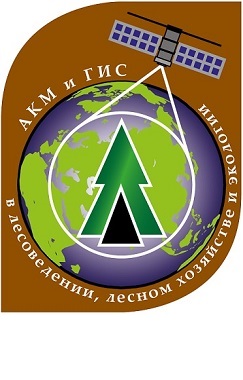
Indicators of the agrogenic stage of forest development
Head: Ivan Semenkov
Date: 2021-2024 гг.
Abstract: Consequences of plowing can be noticed in even old-growth undisturbed forests (sub)boreal communities. It is highlighted in the morphological and chemical properties of soils, the species composition of vegetation and soil microbial communities and zoocoenosis, which ultimately determines the differences between previously disturbed ecosystems from the undisturbed (reference) ones in terms of structural, functional and other characteristics. However, we do not understand the depth, reversibility and systematic nature of the consequences of plowing. Rural depopulation observed in many Russian regions since the 1920s is most pronounced in the non-chernozem regions and result in abandonment of agricultural land (arable land, hayfields and pastures) and reforestation. In some cases after 100 years after the last plowing, the original community was not restored. And low-productivity small-leaved forests occur. But they cannot provide the total volume of ecological functions and services typical for indigenous coniferous, coniferousbroad- leaved and broad-leaved forests in the East European Plain. Until now, there are no studies that comprehensively analyze the ecological state of the whole ecosystem with the characteristics of all components – soil-forming rocks, soils, soil microbiocenosis and zoocenosis (macrofauna), phytocenosis – and key functions of forests. The comprehensive analysis of postagrogenic successions of vegetation and soil ontogeny is fundamentally important for the development of effective management of agrogenic ecosystems and understanding the ways of soil and vegetation cover restoration at forest ecosystems and requires an interdisciplinary approach proposed in this Project. We chose the Smolensk Lakeland National Park as a model territory for such research because large area of Eastern European forests have been preserved here on a compact territory and, what is especially important because the entire original complex of cenoses (spruce forests, pine forests, coniferous-broad-leaved forests, black alder forests, ecosystems of swamps, rivers and lakes), as well as all types of agricultural use (arable land, hayfields, pastures, fallow lands) occur here. In addition, we have a variety of different age cartographic materials and remote sensing images are available. All this provides a unique opportunity to study agrogenic successions with a characteristic time interval of up to 100 years. Using remote sensing data and field geobotanical, taxation, zoological, microbiological and soil-geochemical studies on model objects located on an area of 1.5 thousand square km within the Smolensk Lakeland National Park, we are planning: – to characterize the post-agrogenic history over 100 years of spruce, pine and coniferous-broad-leaved forests with the dominance of linden, maple, oak, ash or elm (hereinafter for short – coniferous-broad-leaved forests) forests, – to assess the impact of plowing on the main ecological functions of soils (the formation of natural fertility, carbon sequestration, etc), – to identify similarities and differences of post-agrogenic successions of vegetation and soil microbocenoses and zoocenoses (macrofauna) at spruce, pine and coniferous-broad-leaved forests, – to identify the presence and duration of the existence of agrogenic fingerprints in the properties of the soil, vegetation and soil microbial and representatives of macrofaunal at (sub)boreal ecosystems. By ‘agrogenic fingerprints’ we mean any characteristics in the composition, functioning and other features of vegetation, fauna and soil, which reflect the agricultural impact on ecosystems. Based on modern knowledge about the history of settlement and management (widespread slash-and-burn and shifting cultivation), we can assume the presence of an ‘agrogenic fingerprints’ in some components or even in all components of the indigenous (sub)boreal ecosystems at the Smolensk Lakeland National Park. For the first time, to develop an effective technologies for reforestation of abandoned agricultural lands, we are planning to provide a comprehensive integrated analysis of all key components of the ecosystem: vegetation, soil macrofauna and microbocenosis, soils, including key characteristics of soil fertility (content of available to plants N, P, K, carbon stocks, mobile fractions of macro- and microelements). These studies will be based on a rigorous analysis and interpretation of remote sensing data, physical and chemical properties of soils, species and functional diversity of phytocenoses and soil microbial and zoocenoses, carbon accumulation in three (spruce forests, pine forests and coniferous-broad-leaved forests) 100-yearold chronosequences in triplication. We intended to highlight indicators of past plowing and determine the rate and main limiting factors of post-agrogenic self-restoration of (sub)boreal forest ecosystems. Data on the properties of vegetation, soil microbial and zoocenoses, as well as soils at the Smolensk Lakeland National Park are planned to be aggregated into a statistical model with a spatio-temporal structure using classes of methods that combine the construction of multidimensional Gaussian processes with elements of deep neural networks for a more correct description of non-trivial relationships between all studied parameters. The developed approach can be adapted for the study and rehabilitation of geocomplexes.










